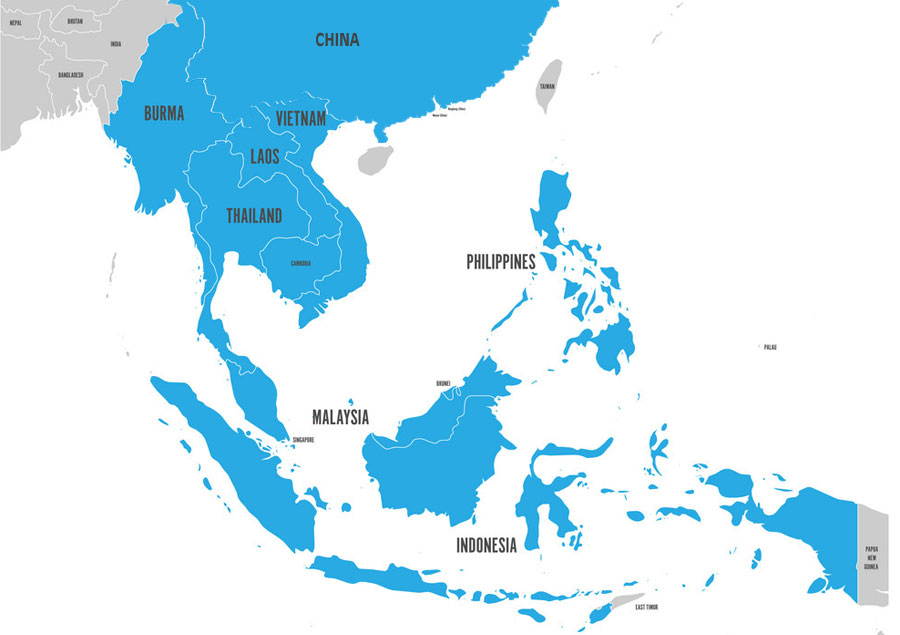US-China Trade Tariff Disputes Usher in a Win-Win for China and ASEAN

Op/Ed by Chris Devonshire-Ellis
The development of China’s Belt and Road Initiative has taken on a deeper importance in Beijing as its leaders seek to distance the Chinese economy from trade concerns with the United States. Although it is nigh impossible to decouple the Chinese economy from US trade in the short term, the Belt and Road Initiative does offer routes away from Chinese dependency on the United States both as a supplier and a consumer market.
This is one of the reasons the now-familiar anti-BRI US media and political rhetoric is becoming shrill; Washington recognizes that China is both asserting itself and trying to escape the US chicken coop it has largely fenced China into for the past 25 years. China is gaining more allies and reducing its dependency on the US through the Belt and Road Initiative, and tensions between Beijing and Washington over US-China trade are both accelerating this and having the effect of reshaping the global supply chain.
The impact of this is already being seen. The Belt and Road Initiative is accelerating the expansion of the China-ASEAN trade corridor as China-based manufacturers (both Chinese and international) seek out cheaper production sites and ways to tap emerging markets’ growing consumption power. We have noticed this in Dezan Shira & Associates own performance this year to date. Our firm handles foreign investment into Asia and has witnessed a 35 percent increase YoY on our service fee revenues from Vietnam.
As I noted back in 2016, at a time when much of the perceived wisdom was that Chinese outbound investment would be heading for the United States and EU, much of it was actually being invested in Eurasia. This increase in capital-goods exports from China to what are now termed Belt and Road nations has generated a trade surplus for China, which should be positive for China’s current account balance. China’s trade with Belt and Road countries increased by 14.8 percent last year and reached US$1.1 trillion.
Looking at the equation from China’s Belt & Road partner countries’ position, the fact that China is exporting capital to assist South-East Asia, in particular, to fill its infrastructure investment gap is an attractive proposition. It is allowing countries like Vietnam, Cambodia, Philippines, and Indonesia to emerge as winners as the US-China trade tensions accelerate factories relocating. A past criticism of the so-called China-Plus-One model was the production gap – products could be manufactured more cheaply, but not necessarily efficiently. Chinese investment is helping to close this.
A US-China trade war will only serve to increase this trend. The ASEAN nations are already seeing the benefits, and these can be expected to continue. China is largely OK with this as it also needs to upgrade its own manufacturing base and improve its innovation and services in this regard. While it makes sense for certain, more high-tech products to continue to be manufactured in China, new developing industries and especially those based in cities such as Shenzhen, Shanghai, and Beijing will gradually evolve as service, design, and innovation centers feeding Chinese factories elsewhere, both in ASEAN and beyond.
In some respects, President Trump and his trade advisers are 30 years behind the times. Sanctions and trade tariffs only work in a relatively closed global economy where you are the dominant player. With the decision by the US to allow China to develop, a concept taken in the late 1970’s and designed to open up the huge China market to US goods, the die was set, and globalization in trade was effectively born.
Trying to impose tariffs in a global trade world today is just having the effect of moving chess pieces around the board as manufacturing operations inevitably relocate in response. ASEAN is benefiting, as will the development of China, with the Belt and Road Initiatives’ trade and infrastructure financing helping this manufacturing change along in Asia, while permitting China to concentrate on developing new industries and innovations at home. For China and ASEAN, US trade tariffs are a win-win.
About Us
Silk Road Briefing is produced by Dezan Shira & Associates. Chris Devonshire-Ellis is the practice Chairman. The firm assists foreign investors in Asia and possesses 28 offices throughout China, ASEAN, and India. Please contact the firm at asia@dezshira.com or visit us at www.dezshira.com
 Related Reading:
Related Reading:
![]() Belt and Road – China Trade up 14.8 Percent, Reaches US$1.1 Trillion in 2017
Belt and Road – China Trade up 14.8 Percent, Reaches US$1.1 Trillion in 2017
![]() China, ASEAN, and OBOR Trade Picks Up: How to Take Advantage
China, ASEAN, and OBOR Trade Picks Up: How to Take Advantage
The China plus One Strategy in Vietnam
In this issue of Vietnam Briefing magazine, we discuss the growing popularity of China plus one manufacturing. We highlight market entry strategies available to investors, analyze the differences between these locations, and finally highlight the important role that rules of origin play for companies that are seeking to tap into Vietnam’s world-class network of trade agreements.






